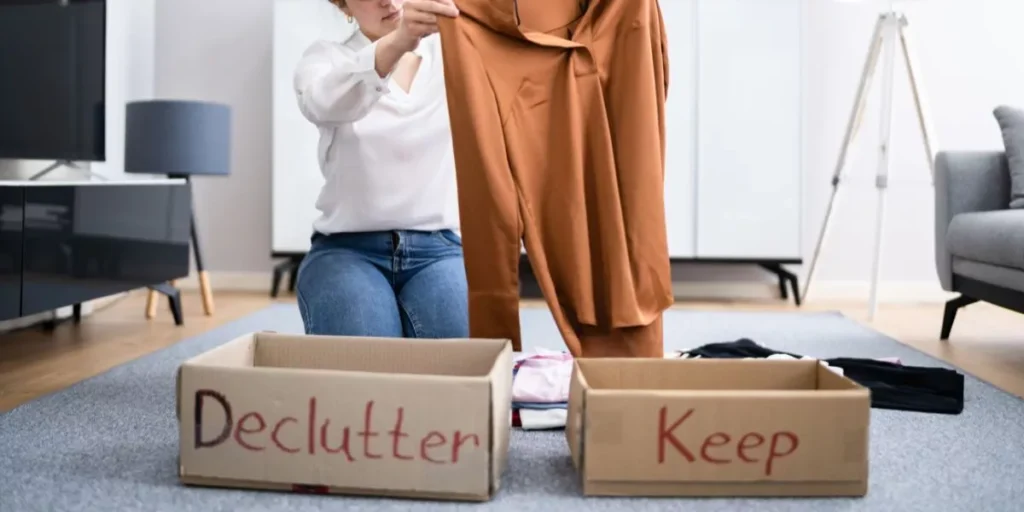
When it comes to decluttering your home, the key lies in a methodical approach that involves strategic planning and realistic goal setting. By breaking down the decluttering process into manageable steps and focusing on one area at a time, you can effectively tackle the clutter without feeling overwhelmed. But what about those sentimental items that make decluttering a challenge? Stay tuned to discover how to navigate this aspect of decluttering and achieve a clutter-free space you’ll love coming home to.
Planning and Goal Setting
To kickstart your decluttering journey effectively, begin by setting clear goals and creating a practical plan. Start by identifying specific areas in your home that need decluttering. Whether it’s the overflowing closet, the chaotic kitchen cabinets, or the cluttered living room, pinpointing these spaces will help you focus your efforts. Establish realistic goals for each area, such as decluttering the closet within a week or organizing the kitchen cabinets by the end of the month.
Next, devise a practical plan to tackle your decluttering goals. Break down each task into smaller, manageable steps. For example, if you’re decluttering your closet, your plan could involve sorting through clothes, shoes, and accessories separately. Allocate specific time slots in your schedule dedicated to decluttering to ensure consistent progress.
Consider enlisting the help of family members or friends to make the decluttering process more manageable and enjoyable. By setting clear goals and creating a practical plan, you’ll be well on your way to achieving a clutter-free and organized home.
Decluttering Room by Room
Start decluttering room by room by selecting a specific area to focus on first. Begin with a manageable space like a small closet or a single drawer. This approach prevents overwhelm and allows you to see immediate progress. Once you choose your starting point, assess the items in that area. Determine what you want to keep, what can be donated or sold, and what needs to be discarded. As you declutter each room, consider the purpose of the space and only keep items that serve that purpose or bring you joy.
Move methodically through each room, tackling one at a time to maintain focus. Set a realistic timeline for each room to prevent losing motivation. Remember, decluttering is a process, so be patient with yourself. Consider using storage solutions like bins or baskets to organize items that you choose to keep. Keep in mind that decluttering isn’t just about getting rid of things; it’s also about creating a space that feels comfortable and functional for you.
Sorting and Organizing Items
Begin by categorizing items into groups based on their use or purpose to streamline the sorting and organizing process efficiently. Start by gathering similar items together, such as clothes, books, kitchenware, or electronics. This initial step will help you see how much you have of each category and make decisions on what to keep or discard.
Once you have sorted everything into groups, designate specific places for each category. For example, designate a shelf for books, a drawer for electronics cables, or a section of the closet for shoes. This will make it easier to locate items when needed and prevent them from becoming scattered around the house.
Consider using storage solutions like bins, baskets, or drawer dividers to keep items within each category organized. Labeling these containers can further assist in maintaining order and finding things quickly. Remember to regularly reassess your belongings to ensure everything stays organized and clutter-free.
Letting Go and Donating
Consider embracing a minimalist mindset when evaluating items for letting go and donating. Take a critical look at your possessions and ask yourself if you truly need or use each item.
Start by decluttering one area at a time, such as a closet or a room, to make the process more manageable. When deciding what to let go of, be honest with yourself about the last time you used the item and whether it holds any sentimental value.
Remember that someone else could benefit from things you no longer need. Donating items that are in good condition can help others in need and also reduce waste. Research local charities, shelters, or organizations that accept donations and consider giving away items that can still be useful to someone else.
Trending Products




